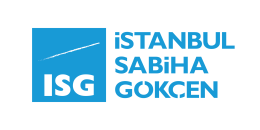Istanbul Sabiha Gökçen’s Gerald Ong: ‘COVID-19 enables full rehabilitation & refurbishment’
Istanbul Sabiha Gökçen grew strongly between 2010 and 2019, recording a CAGR of 13.5% as seat volume grew by 30 million to 42 million.
Across Europe and the Middle East, Sabiha Gökçen was the 16th largest airport by seats last year, ahead of Vienna and Paris Orly.
Gerald Ong, Director of Marketing at Istanbul Sabiha Gökçen chat with anna.aero about the impact of COVID-19 and what it’s doing about it.
- 80% of passengers to be lost between March and May
It has been a month and a half since Sabiha Gökçen was shut down on the night of 28 March. It came after its last domestic flight following the Turkish government’s announcement to suspend all international flights and restricted inter-city travel.
It is expected that Sabiha Gökçen will be closed until at least the end of May. This is the first time in history that the airport has ever been closed and experienced a decrease in traffic.
Between March and May, Sabiha Gökçen is expected to lose over 80% of passengers, over seven million passengers, as well as over 45,000 flight movements. Over 95% of its traffic network is concentrated on Europe, CIS and Middle East regions.
- Reaccessing available marketing support
In such circumstances, and like at other airports, safety is at the top of our agenda during this crisis Gerald Ong says. Prior to the rise of the outbreak, some quick measures were introduced, including passenger distances within the process (check-in, boarding, security checks, hand scanners), increased frequency of cleaning in the common areas of the airport, together with equipment and disinfectant of crowded areas.
We also worked closely with airlines and stakeholders to disseminate the right information with regards to flight cancellation, which happened at short notice, he added.
Following flight cancellations and the airport’s closure, the airport officials have been maintaining close communication with airlines with regard to when they’ll restart operating. Within this context, the airport is reaccessing the available marketing support that it can provide in terms of sustaining some of the key routes upon restart. The airport is also engaging with relevant authorities and the government for support.
- COVID-19 offers the chance to finish on-going work before reopening
According to Ong, what happened was something that nobody see it coming, especially since the strong growth that the airport has achieved since the new terminal opened in 2009. Before this, SAW was resilient despite the global economic downturn in 2009-2010, Russian crisis end of 2015, failed military coup, and terrorism in Turkey in 2016. Following these incidents, the airport was able to rebound within 1-2 years.
While these events were not of the scale of COVID-19, they have taught airport about maneuvering in such situations. It’s easier to look at the worst cases, but at the same time, there’s also light at the end of tunnel.
Being a busy terminal and operating on a single runway, we saw this as a window of opportunity for us to carry out the full rehabilitation and refurbishment of the runway and apron facilities he claims. Until now, only minor works were able to be completed before the midnight/after daily runway temporary closure.
The airport has also been able to speed up the construction and completion of additional check-in islands in the terminal.
The time taken for all these initiatives would have been much longer if the airport had been open and therefore busy.
- Only a matter of time before travel recovers to 2019 level
This incident is unprecedented but is nevertheless has a very significant global impact beyond just aviation. It may take another 6-12 months to gradually build-up, which is also dependent on the availability of a vaccine.
Moving forward, coronavirus will change the landscape of the industry. It will dictate the practice of social distancing, better hygiene at airports, technology-driven passenger processing, and so on. But one thing that won’t change much is that travelling remains a necessity, especially for business purposes.
Therefore, it’s only a matter of time before travel picks up and recovers back to the level back in 2019.
To read the full interview, please visit; https://www.anna.aero/2020/05/12/istanbul-sabiha-gokcens-gerald-ong-covid-19-enables-full-rehabilitation-refurbishment/


